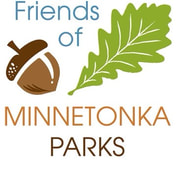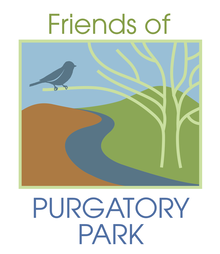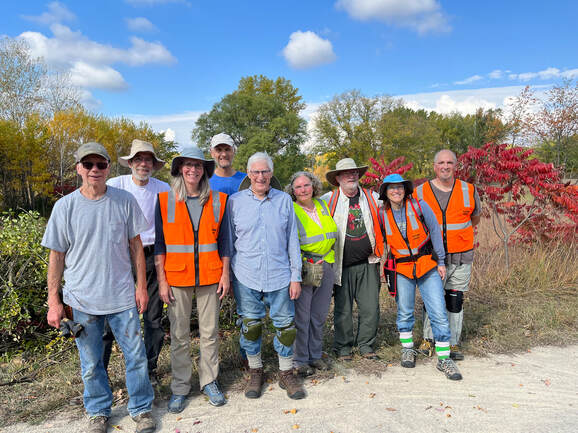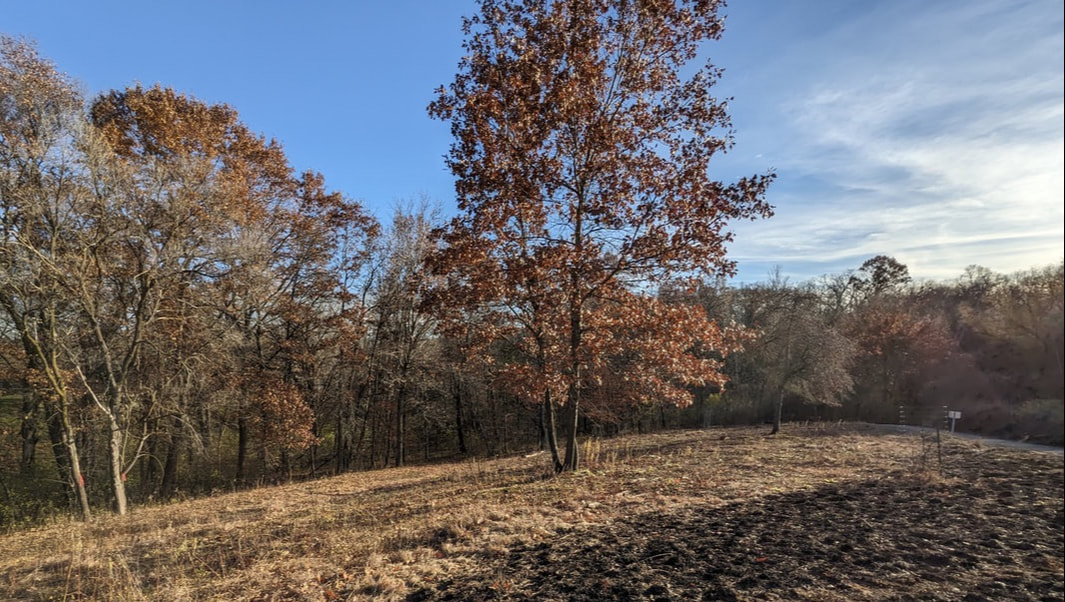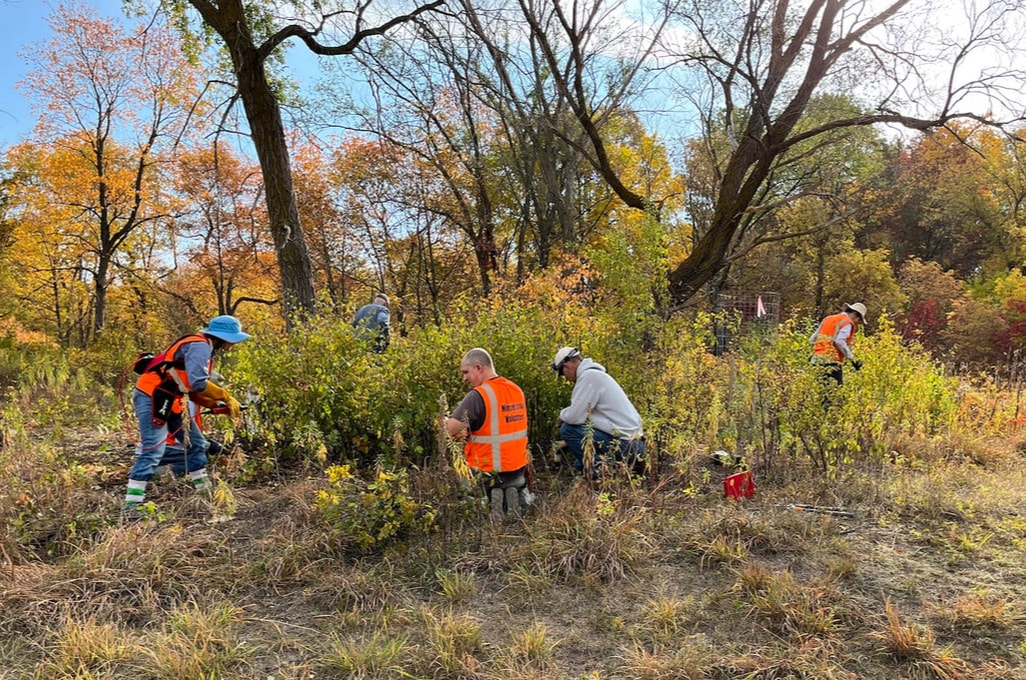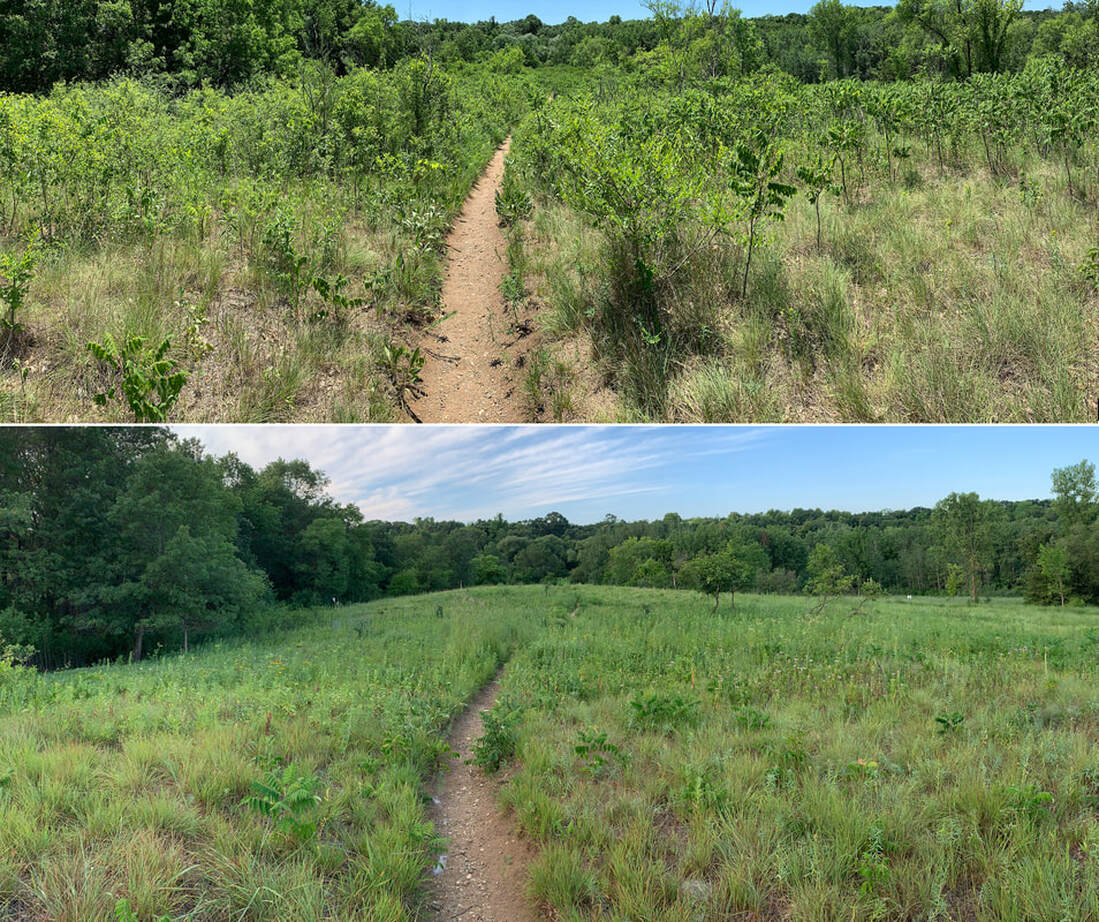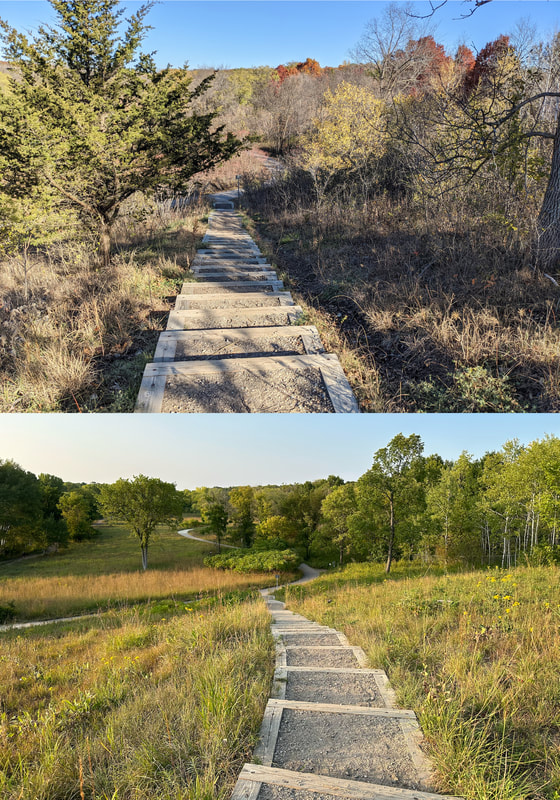Friends of Purgatory Park
|
Spring Volunteer Opportunities
|
PURGATORY PARK REMNANT PRAIRIE BUCKTHORN BLITZ
OCTOBER 9, 2021
2023 Restoration Project - Prairie Remnant and Oak Savanna
Due to the mild weather into late Fall, the Friends of Purgatory Park were able to accomplish more restoration work than anticipated. Over the 2023 year, the Friends worked 429.5 cumulative volunteer hours at a total of 53 events. They expanded the prairie remnant footprint towards the east and south blending habitat into the oak savanna and oak woodland.
In November, the Red Rock Fire services conducted a prescribed burn within the 2021 prairie remnant and 2022 oak savanna areas. Burning creates excellent seeding conditions as seed-soil contact is enhanced. In December, the Friends seeded all of the areas under volunteer active restoration including the prairie remnant and oak savanna/woodland areas. In 2024, the Friends will continue pushing the restoration towards the eastern wetland and school forest border.
2022 Restoration Project - Oak Savanna
|
We hosted 32 restoration events to actively restore 3.7 acres of grassland habitat. 26 volunteers worked 318 hours and pulled garlic mustard and removed populations of birdsfoot trefoil, crown vetch, leafy spurge and lily of the valley. We planted, caged and watered 19 bare root bur oaks, broadcasted 20 gallon buckets of native seed and removed invasive woody brush from over 3 acres. 2023 will be busy as the Friends continue expanding the restoration margins of the prairie remnant. We will continue to monitor and manage the grasslands under active restoration, and will tailor our seasonal actions for the timing of the 2023 prescribed burn. We will also work with city staff to remove the remaining large Siberian elms.
|
2021 Restoration Project - Prairie Remnant
BEFORE
AFTER
|
Beginning in autumn 2021, the Friends of Purgatory initiated work to restore the prairie remnant which had become degraded from the succession/woody encroachment of native plant species—sumac, prickly ash, Eastern red cedar, ash, elm, box elder, and gray dogwood—in addition to invasive woody plants (European buckthorn, Siberian elm, and non-native honeysuckle species). These woody plants (native and non-native/invasive) were shading the existing native forbs and grasses, competing with these prairie species for nutrients and light, and facilitating the decline of the diversity and integrity of the prairie. If no intervention or management of the woody encroachment and invasive plant species had occurred, the prairie and the species it supports would have been lost.
In autumn 2023, City contractors will burn the prairie and following the burn, volunteers will sow native wildflower seed over the temporary bare ground. This will increase the number of flowering plants in the prairie, and increase overall diversity. |
Purgatory Community Preserve
Purgatory Community Preserve is a 155-acre preserve with a passive recreation focus. Located just south of Excelsior Boulevard (east of Hwy 101), Pugatory is the largest preserve in the city. The Preserve showcases a number of habitats and plant communities including a remnant and restored prairie, flood plain and creek, and a treed ridge dominated by oaks.
Cultural History
Various Native American tribes likely crossed the location of the park for centuries. After the government denied the request to include the Lake Minnetonka area in the 1851 Treaties of Traverse des Sioux and Mendota, the land was opened to settlement and the Dakota lost their rights to hunting, fishing and sacred ceremonies.
From the 1850s to 1960s, the land was used primarily for farming and grazing by white settlers. A trolley along Excelsior Boulevard crossed the northern section of the park and brought Minneapolis residents to the city of Excelsior to enjoy the amusement park and Lake Minnetonka. The red barn is a remnant of the Westburg farm homestead. The Westburg family used the spring in the park to start a bottled water business, later running a grocery store, and finally a pet (aquarium) store.
From the 1850s to 1960s, the land was used primarily for farming and grazing by white settlers. A trolley along Excelsior Boulevard crossed the northern section of the park and brought Minneapolis residents to the city of Excelsior to enjoy the amusement park and Lake Minnetonka. The red barn is a remnant of the Westburg farm homestead. The Westburg family used the spring in the park to start a bottled water business, later running a grocery store, and finally a pet (aquarium) store.
In the 1960s, neighborhood developments began to fill around the open space of the park. The land was initially kept as open space due to possible expansion of 62 to directly connect diagonally to Highway 7. As this project was tabled, the city began to suggest possible use of the open space. They entertained a golf course, but surrounding neighbors objected and lobbied for a park. Restoration activities restored the prairie starting in the 1990s. Along with the Westburg farm, the park has expanded slightly with a donation of property near the southern section of the park.
Natural History
Purgatory Community Preserve is a beautiful place to visit, no matter the season!
Featured Fauna - Butterflies
Purgatory's variety of habitats (prairies, woodlands, and wetlands) offer a diversity of native plants that provide nectar and larval host plants for butterflies. The following is a sampling of butterflies one may observe while visiting the Purgatory.
Bees
The well-drained sandy soil in Purgatory's prairies provides a multitude of nesting opportunities for native ground-nesting bees that preferentially nest in sand. One particularly rare pollen specialist, the Vervain Mining Bee, nests in bare compacted sand in the prairie and is a pollen specialist of Verbena (vervain).
How Purgatory Got its Name
Purgatory Park is named for Purgatory Creek which was named by white settlers traveling west in covered wagons. The story passed down through the ages is that the covered wagons stopped by the fresh springs near the location of the park. The wagons got stuck in mud and the mosquitoes were so thick and miserable that someone proclaimed, “This is hell.” To which another replied, “No, not hell, but Purgatory!” The name stuck.
Purgatory Creek
